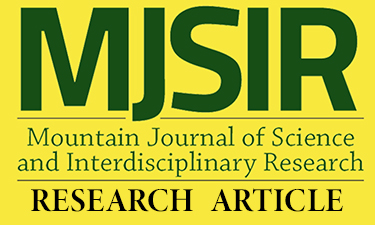Professional Development and Leadership Competence of School Heads in Urban and Rural Areas
Main Article Content
Abstract
This study determined the correlation between the influence of professional development on the leadership competence of school heads in urban and rural areas. One hundred twenty-five school head-respondents from Baguio City and Apayao represented the urban and rural schools. Descriptive research design using a mixed-method approach was used. Survey method using Dep-Ed’s competency-based standards for school heads was utilized for the quantitative and respondents’ lived experiences in attending professional development and its influence their leadership competence for the qualitative. Experiential learning and complexity leadership theory are reflected in the professional development experiences of respondents. The level of competence of urban school heads was found inadequate to allow them to fully perform their duties while secondary rural school heads are competent to handle their functions. There is a high, positive correlation between the level of leadership competence and the level of influence of professional development on the school heads’ competencies in rural and urban areas. School location is a significant factor in the influence of professional development of school heads, while school level is a significant factor in the level of competence of school heads.
Article Details
References
Blundell, E. (2012). Document Analysis as a Qualitative Research Technique in Assessing Oral Health Policy. Dalhousie University. https://www.dal.ca/content/dam/dalhousie/pdf/dentistry/ICOH2010/DocAnalysisSchool.pdf
Broad, K., & Evans, M. (2006). A Review Of Literature On Professional Development Content And Delivery Modes For Experienced Teachers. University of Toronto. https://www.oise.utoronto.ca/ite/UserFiles/File/AReviewofLiteratureonPD.pdf
Chapman, J. (2005). Recruitment, Retention and Development of School Principals, International Academy of Education. International Academy of Education. http://www.iaoed.org/files/Edpol2.pdf
Commission on Higher Education. (2009). National Higher Education Research Agenda-2. https://planipolis.iiep.unesco.org/sites/default/files/ressources/philippines_national_higher_education_research_agenda.pdf.
Civil Service Commission-Cordillera Adminstrative Region. (2012). Program to Institutionalize Meritocracy and Excellence in Human Resources (PRIME-HRM). http://www.csc.gov.ph/2014-0221-08-28-23/pdf-files/file/195-program-to-institutionalize-meritocracy-and-excellence-in-human-resource-management-prime-hrm.
Civil Service Commission-Cordillera Administrative Region. (2014). Audit report on the implementation of the Program to Institutionalize Meritocracy and Excellence in Human Resource Management (PRIME-HRM). Presented at DepEd-CAR, Wangal, La Trinidad, Benguet.
Darling-Hammond, L., Wei, R.C., Andree, A., Richardson, N., & Orphanos, S. (2009). Professional learning in the learning profession: A Status Report on Teacher Development in the United State and Abroad. Stanford University. Washington, DC: National Staff Development Council.
Davis, E., Palincsar, A. S., Arias, A. M., Bismack, A. S., Marulis, L., & Iwashyna, S. (2014). Designing educative curriculum materials: A theoretically and empirically driven process. Harvard Educational Review, 84(1), 24-52. https://eric.ed.gov/?id=EJ1034299
Department of Education. (2015). DepEd Order No. 02, s.2015. Guidelines on the Establishment and Implementation of the Results-Based Performance Management System (RPMS). Pasig City, Philippines.
Department of Education. (2009). DepEd Order 111, s.2009. Establishment of the National Educators Academy of the Philippines in the Region. Pasig City, Philippines.
Department of Education-Cordillera Administrative Region. (2014). Report on Survey of the NCBSSH among school heads in DepEd-CAR. Wangal, La Trinidad, Benguet.
Department of Education-National Educators' Academy of the Philippines. (2015). Paper presented to the Regional Office Human Resource Development Staff.
Department of Trade and Industry. (2016). Competitive Index. https://cmci.dti.gov.ph/data-portal.php.
Fink, E., & Resnick, L. (2001). Developing Principals as Instructional Leaders. Phi Delta Kappan, 82(8). http://www.educationalimpact.com/resources/usl2/pdf/usl2_2A_instructional_leaders.pdf.
Fook, C., & Sidhu, G. (2009). Leadership Characteristics of an Excellent Principal in Malaysia. International Education Studies, 2(4), 106-116. http://files.eric.ed.gov/fulltext/EJ1065746.pdf.
Garman, A.N., & Johnson, M.P. (2006). Leadership competencies: An introduction. Journal of Healthcare Management, 51(1), 13-17. https://pubmed.ncbi.nlm.nih.gov/16479746/
Guskey, T. (2000). Evaluating Professional Development. Kentucky, USA: Corwin, Sage Co.
Kolb, D.A., Boyatzis, R.E., & Mainemelis, C. (1999). Experiential Learning Theory: Previous Research and New Directions. https://www.d.umn.edu/~kgilbert/educ5165-731/Readings/experientiallearning-theory.pdf.
Leithwood, K., & Menzies, T. (1998). Forms and effects of school-based management: A review. Educational policy, 12(3), 325-346.
Leithwood, K., Jantzi, D., Earl, L., Watson, N., & Fullan, M. (2004). Learn How Education Leadership Improves Student Learning. Wallace Foundation. https://www.wallacefoundationorg/knowledge-center/documents/how-leadershipinfluences-student-learning.pdf
Lubrica, P., Parcasio, I.G., Cuevas, J.P., Alvaro, A.V.G., & Batani, R. (2019). SSchoolBased Management in Benguet, Philippines: Its Impact to Quality Improvement among Public Secondary School Heads. Mountain Journal of Science and Interdisciplinary Research, 79(2 Suppl. 1), 152-163. http://journals.bsu.edu.ph/index.php/BRJ/article/view/244
Mulford, B. (2003). Leadership For Improving The Quality of Secondary Education: Some International Developments. Profesorado. Revista de currículum y formación del profesorado, 10(1), 1-20. https://www.ugr.es/~recfpro/rev101ART2ing.pdf
Organization for Economic Cooperation and Development. (2009). Creating Effective Teaching and Learning Environment. https://www.oecd.org/edu/school/43023606.pdf
Philippine Statistic Authority. (2013). Urban Barangays in the Philippines. https://psa.gov.ph/content/urban-barangays-philippines-based2010-cph
Preston, J.P., Jakubiec, B.A.E., & Kooymans, R. (2013). Common Challenges Faced by Rural Principals: A Review of the Literature. Rural Educator, 35(1). https://eric.ed.gov/?id=EJ1022612
Qi, Y., & Li, S. (2014). The issues and improvement of teacher development under the background of urban-rural integration— based on the investigation in part of Chongqing urban and rural areas. US-China Education Review. 4(4), http://www.davidpublishing.com/david publishing/Upfile/4/28/2014/2014042866125057.pdf
Schlosberg, P. (2006). Transformational Leadership: A Holistic View of Organizational Change. 1st edition. Magro Publishing, United States.
Southwest Educational Development Laboratory. (2005). Why Is Professional Development So Important? Reading First Notebook. http://www.sedl.org/pubs/reading100/RF-NB-2005-Summer.pdf
Steiner, L. (2004). Designing Effective Professional Development. What Do We Know?. Porter Professional Development Center. USA. pp 5-6.
Uhl-Bien, M., Marion, R., & McKelvey, B. (2007). Complexity leadership theory: Shifting leadership from the industrial age to the knowledge era. The Leadership Quarterly, 18(4), 298–318. https://doi.org/10.1016/j.leaqua.2007.04.002
United Nations Children’s Fund). (2012). Measuring and Monitoring Child Protection Systems: Proposed Core Indicators for the East Asia and Pacific Region. Strengthening Child Protection Series No. 2. UNICEF EAPRO, Bangkok, 2012.
United Nations Educational, Scientific and Cultural Organization). (2013). Proposed Post-2015 Education Goals: Emphasizing Equity, Measurability and Finance. http://unesdoc.unesco.org/images/0022/002200/220033E.pdf
United States Agency for International Development. (2014). Cities and Municipalities Competitiveness Index: Manual of Operations. https://pdf.usaid.gov/pdf_docs/PA00K5T2.pdf.

